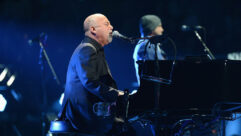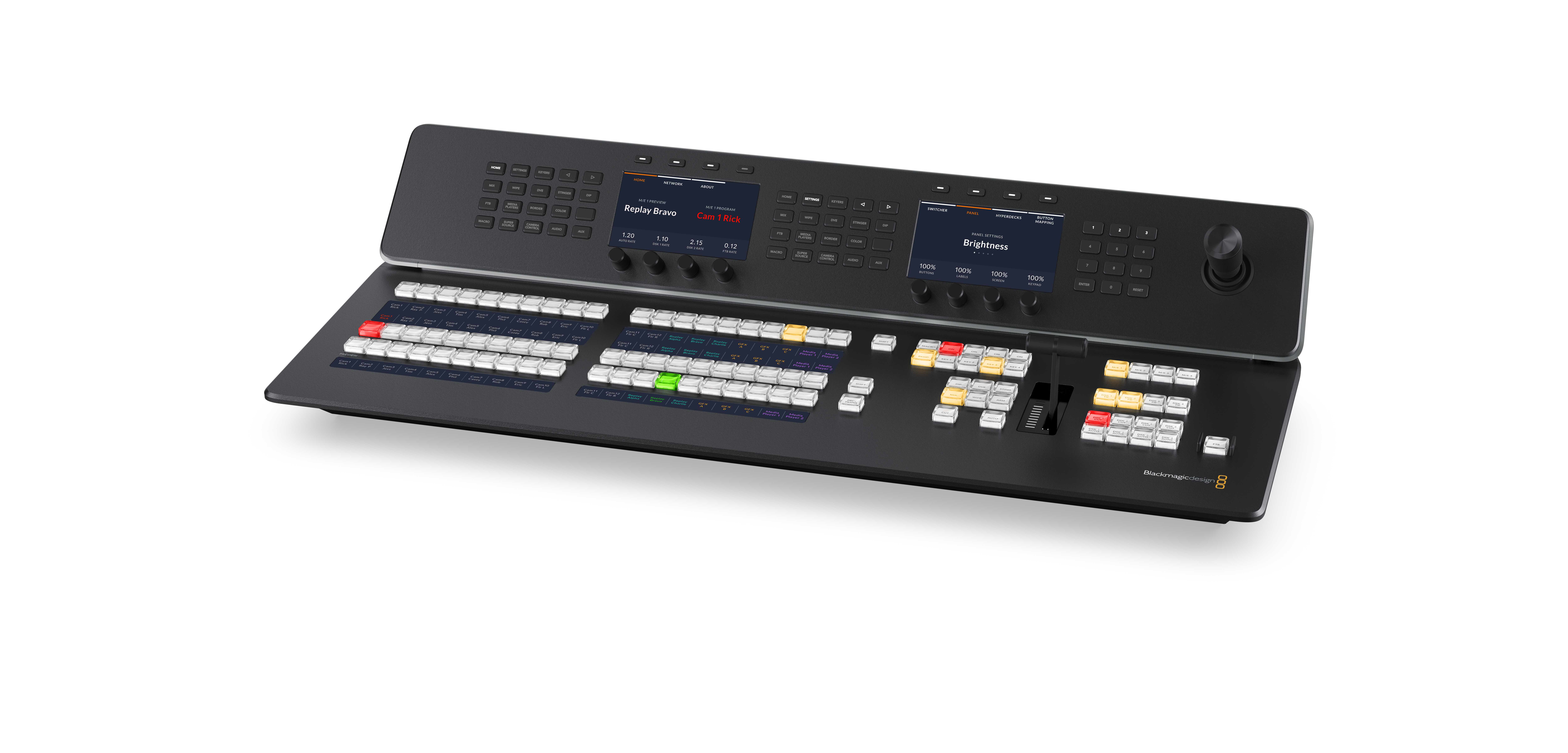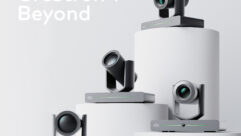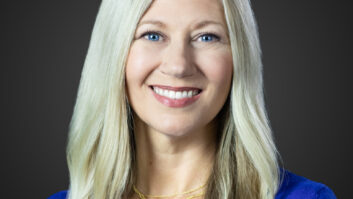
Auditorium Hall Upgrade at University of Rhode Island, Part 1
Jul 1, 2013 2:41 PM,
With Bennett Liles

Listen to the Podcasts
|
Editor’s note: For your convenience, this transcription of the podcast includes timestamps. If you are listening to the podcast and reading its accompanying transcription, you can use the timestamps to jump to any part of the audio podcast by simply dragging the slider on the podcast to the time indicated in the transcription.
With all of the events coming along for Edwards Hall Auditorium at the University of Rhode Island, the old sound system couldn’t handle it and Adtech Systems was called in to modernize and upgrade the place with a Bose RoomMatch system. James Welsh and Charlie Crane are here to tell us how they made it happen, coming up next on the SVC Podcast.
SVC: James and Charles, thanks for being with us on the SVC Podcast and I believe you’re up there in Massachusetts?
James Welsh: That’s correct.
Okay, with Adtech Systems. And we’re talking about a big project at Edwards Hall Auditorium on the University of Rhode Island’s Kingston campus and the sound system that you put in there. But first, tell me something about Adtech Systems, James. What’s been going on there?
Welsh: We’ve been keeping real busy doing our system installations up here. We’re just west of Boston in Sudbury, Mass. We’ve got about 115 people working here, and all we do is audio/visual installations and we keep pretty busy doing it. [Timestamp: 1:22]
And as long as you’re specializing in one thing, you probably do it very well. The Edwards Hall Auditorium looks like a fairly busy place and they wanted a versatile system installed. Now James, how did you get into this project? Had you worked for the university before or was it just a bid process?
Welsh: We actually do quite a bit of work for the University of Rhode Island, and this was an instance where they engaged us. It was competitive, but it was a competitive design/build, not just a bid. So it was actually our design. [Timestamp: 1:50]
And it looks like a situation where they needed good speech intelligibility but also to be able to handle a lot of different things, just about any kind of event that they might want to have in there and I think they use this place for lots of things. Charlie, you were right there onsite. What was the big problem to be dealt with on this? Was it acoustics, architecture or just the number of things the system had to be able to do?
Crane: Well it’s funny because the campus’ architect thought that they had an acoustic issue, but the room is actually quite well behaved and very low reverberation and not a lot of bad reflections or anything like that. It really was just an issue of not having the proper direct-field coverage. Their existing system just didn’t cover all the seats, and the seats it covered, it had some bass issues and it just needed a fresh look. [Timestamp: 2:34]
What sort of a system did they have in there? Was the system that you installed a big departure from the type of sound system they had in there previously?
Crane: Yeah, they actually had sort of a two-prong system. They had a little 3.1 system across the front for when they watch movies—just a left, right and center. The problem with that system was that when you were seated up in the balcony you couldn’t even see the center speaker, so it really was only effective for people on the first floor there. The central cluster was a little bit better at covering the hall for speech reinforcement, but the cluster didn’t have enough vertical dispersion to cover all the seats. And then it also overshot the first couple of rows a little bit, so there wasn’t the high frequency coverage down low. And because the room is so wide and it’s not very deep, and it has that very big balcony, a majority of the listeners were relying entirely on over-balcony and under-balcony fill speakers of which, incidentally, there weren’t enough of. So the room just kind of had issues all around. [Timestamp: 3:38]
And so you guys came in there and what did you do, just go ahead and rip out the whole previous system all together?
Crane: We did predominantly. We leveraged some of the existing under-balcony speakers. We repositioned them and we added to them so that they had proper coverage, underneath especially. And yeah, and we just went with the progressive arrays to cover pretty much the entire room. [Timestamp: 4:00]
Auditorium Hall Upgrade at University of Rhode Island, Part 1
Jul 1, 2013 2:41 PM,
With Bennett Liles
And we’re talking about the Bose RoomMatch system, right?
Crane: Right. That’s correct.
So you got in there, took out the whole previous system and decided what you could use from that and what you’d have to do away with. Now Edwards Hall Auditorium is known as a fairly busy place so what were the acoustics like in there? Is there a big difference in the sound when it’s empty and when it has a big audience?
Crane: No, actually the RT60 at 1kHz is only three-quarters of a second. The seats are pretty padded, and there’s a lot of raised paneling and jogs in the wall, so not only is it pretty absorptive, whether there are people in there or not, but it’s a pretty scattering diffuse the room as well. So that’s when we got the initial call, the architect was sort of lamenting about the poor acoustics. When I walked into the room I said, “Boy, I think we’re just dealing with proper system design.” But no, it’s a very nice, very anechoic room relatively speaking. [Timestamp: 4:56]
No was it originally designed as an auditorium or was it converted from something else?
Crane: Yeah, actually my understanding is it was converted from a library sometime in the 1920’s or 30’s, so that’s one of the reasons why the architecture doesn’t lend itself to—well, let me put it this way: If you were designing an auditorium and a lecture hall from scratch, you probably would not have gone with this footprint. So you can definitely tell the room has served a couple of purposes over the years. [Timestamp: 5:23]
And so looking at all this and what had to be done, what did you come up with on the design and the speakers for this?
Crane: Sure. The surround system just didn’t work because of the geometry of the room. The spatial cues of a normal 5.7 or 7.1 system, with such a deep under-balcony and over-balcony, it just didn’t work. So the customer decided let’s shoot for the concert environments and large events that we have in here, while at the same time keeping an eye on using it as a traditional lecture hall. So with that sort of as our marching orders, we looked at a left-right, sort of what people call a J-array system. Not so much for stereo imaging, but because of the width of the room. The room’s much wider than it is deep. So while I do believe we have some things routed in a stereo fashion to the two J-arrays, it’s predominantly sort of like a split system, if you will. It also is something very familiar when musical acts walk in there. They look up and see the left-right J-arrays and it looks like your typical nightclub system. It’s something that’s sort of rider-friendly and they can get into it and feel comfortable. [Timestamp: 6:31]
And so the choice of systems was the Bose RoomMatch speakers and why did you decide to go with those in particular?
Crane: Well one of the things that I like about the progressive arrays is they do a fantastic job of having consistent sound pressure level from the front of the room to the back of the room. And there are a lot of J-arrays, or a lot of arrays, that Bose has, but the neat thing about the Bose system was that you choose different dispersion boxes and you customize your footprint that you’re laying down throughout the room, but in their system the back of each of the boxes receives the same power. So for instance, if you’re trying to throw to the back of the balcony, you get a box that has a very tight dispersion, and though you’re applying the same amount of wattage as the down-fill box, because it lends the higher Q, the sound pressure level going to the back of the balcony is greater than right below the cluster. And by the time it arrives in the balcony, you can have a sound pressure level that’s only a dB or two different from the front row to the back row. And now the benefit of applying the same power to all the cabinets in the J-array, is that the phase coherence coming off the array is kept intact or as close as is humanly possible, as opposed to a traditional array where you turn up the volume to the long-throw element and you turn down the volume to the near-throw element. And by doing that the interaction between the cabinet and the array, the phase coherence gets ripped all to shreds, and that affects your sound quality. So this is kind of neat. You apply the same power to the back of every cabinet and by lensing those cabinets differently you get higher or lower output. So it’s kind of a neat concept and it worked really well in this room especially. [Timestamp: 8:24]
Yeah, I was curious about that because in reading up on this one I noticed that on the RoomMatch system there are some adjustable aspects to it that you can use to configure the dispersion to fit the acoustics of the room.
Crane: Yeah, exactly. It was more so than adjusting. So basically when you’re doing the acoustic modeling, you’re choosing your elements, you get an array that fits the footprint of the room that you like and if you see that, “Okay, I’m using a 70 by 40 to reach the back of the room, but I’m 3dB down, so how can I get three dB more output of the long throw device?” Well you take out your 70 by 40 and you put in two 70 by 20’s, and because they take the same power, you’re doubling the power as it were and reducing the dispersion by half. You get 3dB more output in the far field and now you’re getting an even sound pressure level from the front to the back. So it’s kind of a neat take on that whole idea. [Timestamp: 9:17]
Yeah, some things you can play with a little after you’ve done the analysis and get a little creative with it. It’s nice to be able to tweak in the system after you’ve got it in the room instead of having to invest in fixed units that only do one thing, one way.
Crane: Yeah. The neat thing is when you’re tuning the room, you set the gain of your amplifiers all the same and you get this great coverage from front to back. And the benefit to the customer is that the sound quality in the seams between the cabinet sounds really good as opposed to having different gains where you get that sort of phase action between the cabinets. [Timestamp: 9:54]
Alright, well it sounds like it was a fun installation and in part two we’re going to get into exactly what you did and we’ll talk about some of the specific elements of the Bose RoomMatch system. Until then, I appreciate your being here, James Welsh and Charlie Crane from Adtech Systems and the complete sound system upgrade at the University of Rhode Island’s Edwards Hall Auditorium. Thanks for being with us.










